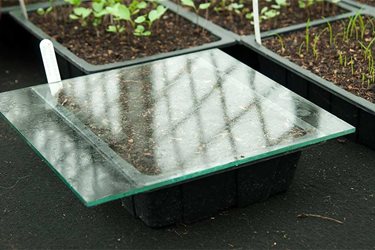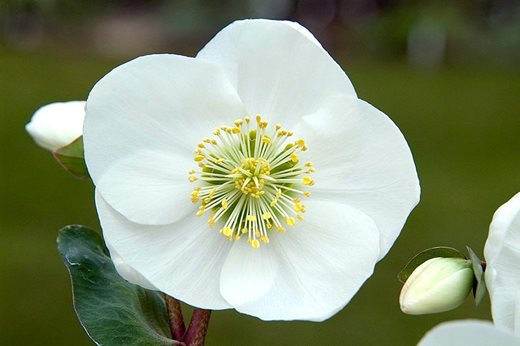Sowing and planting
 Alpines can be sown from seed this month. They need a period of cold to break the seed dormancy. A sheet of glass can be positioned over the sown area to protect it from excessive wet. Alternatively, the seeds can be stratified in the fridge, for sowing next spring.
Alpines can be sown from seed this month. They need a period of cold to break the seed dormancy. A sheet of glass can be positioned over the sown area to protect it from excessive wet. Alternatively, the seeds can be stratified in the fridge, for sowing next spring.
 Propagation
Propagation
Root cuttings can be taken from now. Papaver (perennial poppies), Verbascum (mullein) and Phlox are suitable examples.
 General maintenance
General maintenance
Helleborus niger (Christmas rose) blooms can look unsightly when splashed with muddy raindrops. Bark chip mulch will reduce this splashing effect, and cloches can always be used where practical.
Clear up weedy beds ready for spring mulching. Order bulky organic matter (e.g. well-rotted farmyard manure or mushroom compost) for use as a soil improver or mulch.
Protect for the winter
Check on tender plants outdoors to ensure winter protection is still in place, especially after storms. Raise patio containers onto feet or bricks to avoid them sitting in the winter wet.
Large tubs that are at risk of cracking in the frost should be covered with bubblewrap, hessian or fleece, to insulate them over the winter. Tender plants and pots can be brought into the greenhouse or conservatory if not done so already. Even in mild areas, the winter usually gets much harder after December.
Apply a mulch to protect plants that are borderline hardy.
Tidying up
Finish the autumn tidy-up of leaves from beds and borders if you have not already done so. It is especially important to clear leaves and debris from alpines, as they will die off if covered in damp for any length of time. Bare patches can be covered with gritty compost to encourage the re-growth of surrounding clumps into that area.
Keep tubs and containers tidy too, cutting back and removing debris regularly. They can be mulched with compost.
 Planning ahead
Planning ahead
Improve the drainage of heavy clay soils by working in plenty of bulky organic matter, such as composted bark.
Order seed catalogues, if you have not done so already, to select next year’s bedding and perennial choices. You will have more chance of finding all your choices in stock if you order well before the spring.
Members can order seed from the RHS Seed Scheme between 1 November and 31 March.
 Pest and disease watch
Pest and disease watch
Look out for Botrytis (grey mould) on spent herbaceous plants, and remove affected growth. Otherwise there is a risk that fungal problems could spread to healthy plants.
Hellebores can be at risk of diseases such as hellebore leaf spot.
Watch out for downy mildew and leaf spot on winter pansies.
Sometimes daffodils can come up very early, even before Christmas. Enjoy them, but be aware that they too can succumb to fungal problems, such as narcissus leaf scorch.
Look out for crown rot and brown rots (sclerotinia) on died down perennials, especially if you are on a clay or poorly drained soil.
Antirrhinum rust and delphinium black blotch, as well as sclerotinia, will lay dormant and re-infect plants when they come up the following year. It may be necessary to replant new specimens in another place if the problem is severe.
Be aware that many diseases will overwinter in the soil, or on plant debris.

